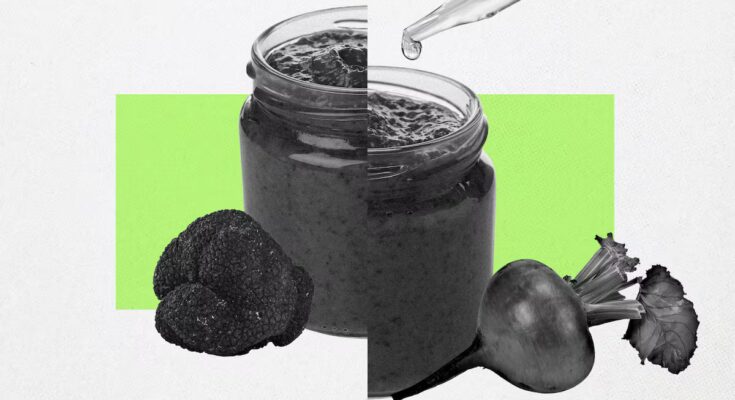The life cycle of every pumpkin goes through being born, growing, turning into cream and disappearing. Precisely for this reason pumpkin is an autumn fruit. Because in autumn, in the absence of gazpacho, spoon alternatives and little work are needed. And what humans need, Nature provides.
On Tuesday I took a pumpkin, turned it into cream and we haven’t had dinner at home for three days. To chase away boredom and give a touch of class to the bowl, yesterday I retrieved a jar containing “something” from the wardrobe. gourmet”, bought at a craft fair half out of curiosity, half out of solidarity.
We are talking about a truffle-type sauce, a family of aromatic pastes and pâtés with a certain dose of truffle accompanied by mushrooms, olives, oils or aromatic herbs, which are usually sold as a refined complement capable of elevating a simple plate of spaghetti or a rudimentary pumpkin cream to the status of Haute Gastronomy. Thanks to them a mixture can be sold for fifteen euros.
Since that dinner of pumpkin cream with truffle, I have lived surrounded by a murky fog of ebbs and flows from my own body. For three days now everything around me has been screaming “truffle and lye” in a way that only synthetic truffle extracts tend to provoke. But how can this be, if the author of that “delight” gourmet” is a small artisan with a minimalist website with Swiss fonts, sepia-filtered photographs of olive fields and slogans like “authenticity” or “only real truffles, no added flavours, free of chemicals, harvested with respect and love for the earth”? How can I notice the language as if I sucked a mop if “every truffle harvest is a gift from nature”?
I’m getting older and my sense of smell and esophagus, my faithful allies, are failing me? Maybe those uncomfortable feelings are an age thing? The doubt lasts as long as I need to remember how the world works. And then another tiredness appears. A satiety peppered with indignation at the inflationary use and abuse of words such as artisan, territory, roots, naturalness or “respect for the earth” which lately fill everything that has a label and is eaten, and which once meant authenticity, work, origin, knowledge and heritage, but now serve as sentimental packaging to justify luxury prices for mediocre substitutes.
The tartufata in question promises on the manufacturer’s website “an irresistible combination of mushrooms, black olives, extra virgin olive oil and 7% self-harvested summer truffle”. But on the label of the jar I’m holding in my hands everything that is the joker “aroma” appears. Could this be the natural truffle aroma that you would expect to find in a 160 gram jar for 15.95 euros? I could. But I go back to the site, click here and there, and behind the “details” tab I find what I’m looking for: “a silky texture full of pieces of real truffle, accompanied by a natural aroma developed with ingredients such as beetroot”. Everything surrounding this glass jar is a masterpiece of contemporary gastronomic marketing.
According to Regulation (EU) 1334/2008, a product can indicate that it has a natural truffle aroma only if 95% of that aroma comes from real truffles. Behind the “natural aroma” (without the word truffle) of the truffle one hides an industrial process of laboratory production of aromatic compounds from natural sources, in this case fermented beetroot molecules, but not truffle molecules. If these compounds came from a petrochemical derivative, the law would require them to be listed on the label as “artificial flavor,” but since beetroot is “natural,” so would the flavor.
That small percentage of 7% truffle allows mushroom pâté to be included in the family of truffle sauces, but that truffle is not even the black winter truffle, which is of better quality and more aromatic. To compensate for its tastelessness and to be able to write on the label “with natural truffle” and “without artificial flavourings”, the solution is the theater of “natural” flavourings.
This preparation borders on arrogance within the framework of legality, but it is so. Its aroma, however natural it may be, is much less balanced and subtle than that of the real truffle. This causes that annoying sensation of sinus invasion. If the base carrying that flavor is also too heavy or fatty, it causes heavy digestion and reflux.
My sense of taste and smell has not abandoned me, but for a long time I have not known where to place my faith and patience in the face of deceptions, artifices and gastronomic impostures. Between the fake truffle and the real pumpkin, I’m sure who I’ll go with. For now, and since nothing is thrown away in my house, I get ready to finish the last portion of cream, which will taste like freshly washed supermarket floors.



